
The beginning of 2017 dawned with an interesting contrast: There was arguably more buzz about the sport of climbing than ever before, spurred partly by the recent announcement that climbing would be included in the 2020 Olympics. On the other hand, gym growth from the previous year was somewhat low compared to previous annual marks (6.9% growth rate in 2016, to be exact). This laid a foundation of uncertainty for the ensuing year: Would the growth rate continue to taper? Would operators grow skittish about expanding and updating their facilities? And would climbing’s hype, on the whole, continue to bolster industry interest?
As it turned out, 2017 managed to shrug off any anemia and proved to be one of the best years for the gym industry in recent memory. In fact, 43 new commercial gyms opened in 2017; not only was that nearly double the number of new gyms that opened in 2016, but it also set the record for the most facilities opened in a single year. It all amounted to a 10 percent growth rate in the United States, with the new gyms spanning 23 states—from Hawaii to Florida. Within the U.S., several cities saw their first climbing gyms open.
Canada wasn’t quite as prolific, with 13 new gyms opening—at a slightly lesser 9 percent growth rate; but it’s worth noting that 2016 was Canada’s boom year, and the high mark of 18 percent growth rate in 2017 would be almost impossible to replicate two years in a row.
So, by all accounts, 2017 has to be considered a great year for climbing gyms—statistically the best of the past four years. (CBJ only counts commercial climbing facilities and not recreation centers or university walls in this assessment.)
Developers on the Rise
The fact that gym growth rate has not dipped below 6 percent since 2010 indicates a stability that any industry would be encouraged by. Such steadiness has managed to garner attention from outside investors, who have begun contributing money and pressure at an increased rate to a gym scene that has long been mostly run “by climbers, for climbers.”
Yet, surprisingly, the 10 largest gym developers didn’t actually open that many facilities in 2017. However, the separate plans they announced for the future will collectively impact the industry for years to come. For example, in March, Earth Treks announced it was involved in a major investment with the private equity group Tengram Capital. Earth Treks followed up by announcing it would make history and build the largest climbing gym in the U.S. (53,000 square feet), to be located in Englewood, Colorado (near Denver). A few days later, Earth Treks also announced the start of construction on another gym—a 20,000 bouldering-only facility near Baltimore, Maryland. Earth Treks also replaced its aging Columbia, Maryland, facility with a new 38,000-square-foot climbing and fitness facility, quadrupling the size of the original space.
Amid all of Earth Treks’ ongoing and proposed construction projects, there were significant happenings for the company behind the scenes too. In November, a formal announcement was made that California-based Planet Granite and Earth Treks were merging. With PG’s four gyms (and two on the way) and ET’s five facilities, this union created the largest gym developer in the U.S., with 257,000 square feet of combined climbing. This news rocked the climbing gym industry and created was is now the first truly national brand.
Central Rock Gym Syracuse is now open!!! Come try it out!
Climbing – Fitness – YogaPosted by Central Rock Syracuse on Wednesday, January 17, 2018
Looking at other companies, Massachusetts-based Central Rock opened two facilities in 2017 one in Syracuse, NY and another in Warwick, RI. Three additional gyms that are on the docket for 2018 would, upon completion, make Central Rock the second largest developer behind Planet Granite/Earth Treks. However, unlike Planet Granite/Earth Treks, Central Rock has stayed regional, focusing its expansion solely within Northeast markets and keeping most of its facilities under 20,000 square feet. It’s a different growth strategy, but it has resulted in rather substantial progress for the Central Rock brand.
Also in the Northeast, Gravity Vault, based in New Jersey, opened a number of gyms under its franchise model—in Hoboken, and Melville, New York, as well as Radnor (a Philadelphia suburb)—and maintained its position as the seventh largest developer in the country.
Elsewhere, Salt Lake City-based Momentum Climbing expanded their brand by opening two new massive climbing facilities in the Houston metro area; these openings crystallized Momentum’s partnership and investment with wall designer Walltopia, which began two years prior. The differentiation of the two Houston facilities is worth highlighting—one is a full-service facility (Momentum Katy), while the other is a bouldering-only facility (Momentum Silver Street). Keep an eye out for Momentum, statistically the fifth largest developer, to enact this twin operational strategy in Seattle in 2018. The company also announced plans for a bouldering-only gym in its home base of Salt Lake City. If all plans move forward on schedule, 2018 and 2019 could be a banner year for Momentum and see them cornering the climbing market in a number of big cities.
We are so psyched to show you all our finished tour video! Share with your friends and bring em’ in! Membership Enrollment is waived through the end of the year for Texas locations!
Posted by Momentum Indoor Climbing Katy on Wednesday, November 29, 2017
There were sprinklings of big news stories from other large developers throughout the year too, including Mesa Rim (statistically the fourth largest developer) opening a ground-up 24,000-square-foot facility in Reno, Nevada, and Touchstone (the second largest developer after PG/ET) opening its 10,0000-square-foot Verdigo Boulders in Burbank, California. Touchstone now has 12 facilities spread throughout California, with another gym slated to open in Berkeley this year. (Touchstone was the largest developer in the U.S. prior to the Earth Treks/Planet Granite merger mentioned previously.)
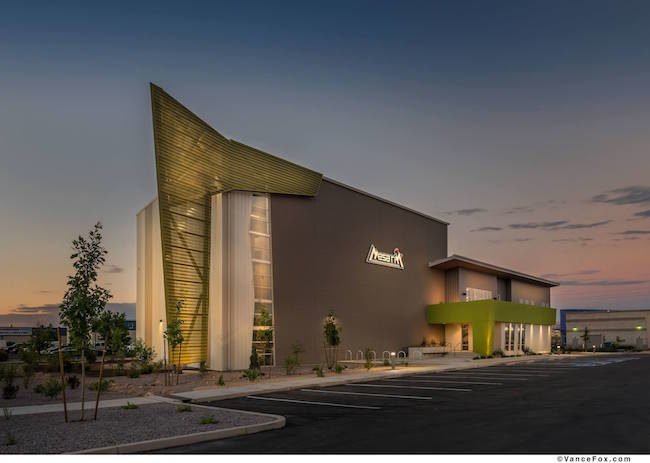
Bouldering, First-Timers, and Small Timers
While many of the top developers eyed projects that wouldn’t be completed until after 2017, there were a number of smaller and mid-sized gyms that did open their doors. In fact, 25 operators that opened gyms last year were doing so for the first time—boldly dipping their toes into a game where prior experience and brand-recognition can matter. Perhaps the most high-profile of these was Ubergrippen in Denver. Ubergrippen boasts 16,000 square feet of diverse climbing surface (top rope, lead climb, auto-belay, bouldering), as well as a full fitness area, yoga classes, Ninja Warrior-style training, and an area called The Alcove that’s specifically designated for “family climbing” which fits their Stapleton (an inner-suburb) demographic.
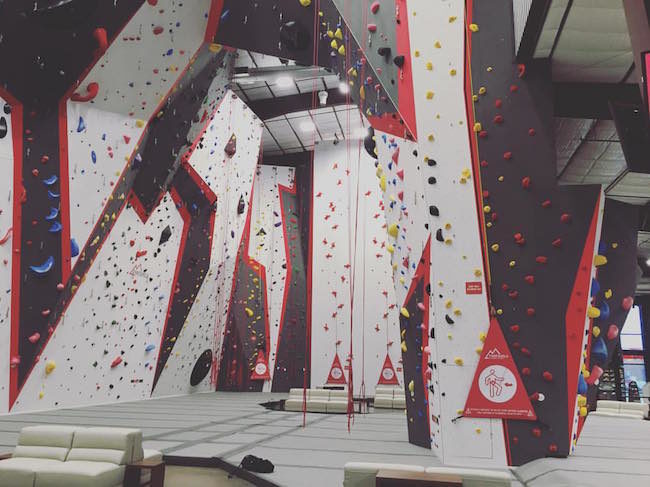
Opting for a more minimalistic approach, Solow Bouldering Club in Milwaukee, Wisconsin, opened in November in a space that had previously existed as a famed bakery. Solow offers 10-foot lowball walls for a bouldering-only experience, but the bouldering space is also connected to a strength and conditioning gym. Solow’s owner, Devin Greer, told Climbing Business Journal that he was motivated to open a bouldering facility after recognizing a need in Milwaukee for “an affordable, down-to-earth gym.”
Greer’s idea for a bouldering gym in his city hints at a wider trend.
In fact, across the U.S., 20 bouldering-only gyms opened in 2017—the most ever in a single year. Canada, as well, demonstrated this trend by opening seven bouldering-only facilities.
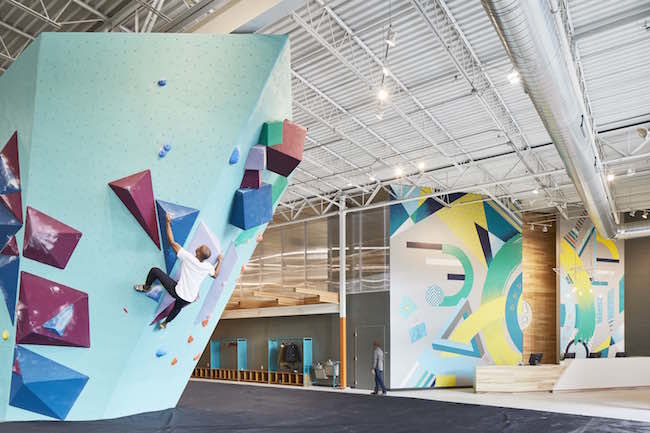
Smaller markets such as Destin (Florida), Grass Valley (California), Waipahu (Hawaii), Clovis (New Mexico), and Cody (Wyoming) opened bouldering-only gyms last year, as well as larger metro areas like Houston (Momentum Silver Street), Minneapolis (Bouldering Project), Chicago (First Ascent Uptown), and Atlanta (Stone Summit Midtown). Two smaller inter-urban bouldering gyms also opened in New York City (GP81 in Brooklyn and Steep Rock in Manhattan).
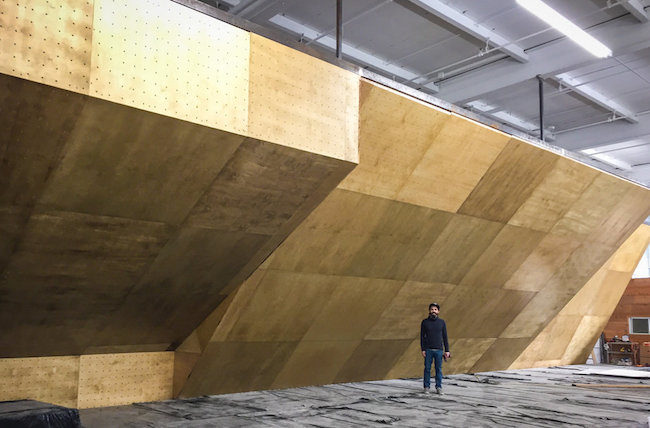
In contrast to that hodgepodge style of regional development in the U.S., all of the new bouldering-only gyms in Canada were built in large metro areas (three in Toronto, and five spread throughout larger cities like Calgary, Quebec and Montreal). Toronto, in particular, could be an interesting test case for other cities going forward: Before 2017, Toronto’s metro area already had 11 commercial climbing gyms (in a city of 2.8 million people), yet developers seemed undeterred or unconcerned by any risk of oversaturation—bouldering gyms still popped up around the city.
All indicators point to this trend of bouldering-only gyms, which have long been more common in European and Asian markets, to continue into 2018, especially as developers move into urban areas in the U.S. with tighter competition. Many of the bouldering-only gyms specifically brand themselves as alternatives to the larger full-service facilities in the given cities, and thus market the simplicity of their respective spaces. And bouldering-only gyms are proving to be popular for developers and patrons alike: With characteristically smaller facilities, less gear and more modest membership numbers, these gyms present a lower cost model for operators, and typically offer a closer-knit, communal feel for members.
Experience Denver’s newest indoor rock climbing facility in this video tour (courtesy of our friends at Vertical Solutions — builders of Übergrippen’s American crafted climbing walls)!
Posted by Übergrippen Indoor Climbing Crag on Monday, October 2, 2017
Getting a Regional Read
The growth in 2017 was so widespread that it’s difficult to decipher any sort of regional patterns; it seems that the growth was happening everywhere.
That being said, it was interesting to observe the emergence of thriving markets like Florida. The state that has not had much gym growth since the late 1990s/early 2000s, saw four new gyms open last year. Louisiana also opened four new gyms, including a second Boulder Lounge location in its New Orleans market. Despite these openings, it’s worth stating that there are still some notable holes in the Gulf Coast region—coastal city markets such as Mobile, Alabama, Corpus Christi, Texas, and Biloxi, Mississippi, lack gyms. In fact, Mississippi’s only gym, The Hangout, closed four years ago and no developer has returned to that state since. (Both Dakotas and Mississippi are the only states to have zero commercial climbing facilities.)
Northward, the New York City metro area had three gyms open in 2017, with a MetroRock facility planned for Brooklyn this year and Central Rock and Cliffs both planned for Manhattan and Harlem respectively. Although New York’s gym growth over the past few years has been substantial, the city of 8.5 million people still ranks rather low on the number of gyms per capita.
In Colorado, two new commercial gyms stepped into the hyper-competitive market that is Denver; the aforementioned Ubergrippen, and Evo Rock took a big leap outside of their New England stomping grounds and opened a 25,000 square foot ground up building off of Highway 36 between Boulder and Denver. The location is prized for it location but Evo will be up against stiff competition when Gravity One opens six miles away later in 2018.
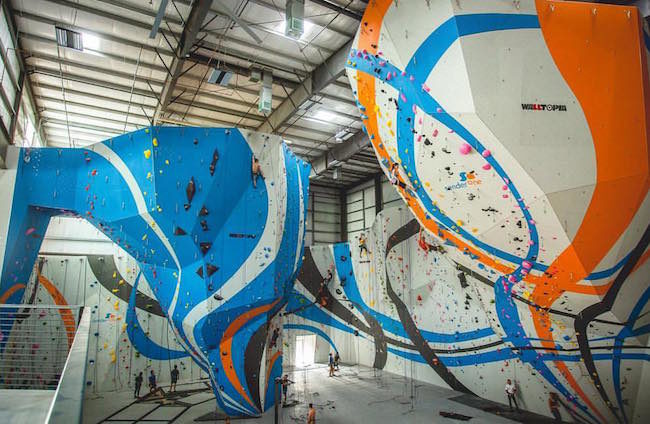
Closures
Perhaps equally as significant as the abundance of gym openings was the lack of gyms that closed their doors in 2017. Although information about closings is not as readily available as information about openings, CBJ data shows only two closures last year. This marks the lowest termination rate for the industry on record.
The Arcadia Rock Gym in California, originally opened in 2000, abruptly closed its doors to the public in June for unknown reasons.
In that same month, in Fort Collins, Colorado, Inner Strength—open since 1993—ceased operations. Inner Strength owner Mike Hicky told his brokenhearted members that he was retiring from the business. Hicky didn’t give any other reason for the gym’s closure, but he had told the Rocky Mountain-based publication Collegian in 2015 that he believed the arrival of another large climbing facility to the Fort Collins community would be tough on all the area’s gyms—and the full service, 18,000-square-foot gym, Ascent Studio, opened in the town just a year later.
End of a Great Year
By the year’s end, it was clear that the year had been a positive one, not only for industry growth, but also for publicity. Consider that The New York Times ran an article in March, 2017, titled, “A Boom in Rock Climbing, Minus the Rocks.” Other mainstream news outlets like CNN also ran pieces during the year that cited the popularity of gyms, spurred still by the ongoing enthusiasm for climbing’s inclusion in the next summer Olympics. If the trends from 2017 continue and many of the development plans progress on schedule, 2018 looks to be another year of grand ambitions and new facilities catering to various types of climbers and gym-goers.
Gyms and Trends was written by:
Mike Helt, Editor-in-Chief
John Burgman, Assistant Editor
Jon Lachelt, Data & Statistics

Climbing Business Journal is an independent news outlet dedicated to covering the indoor climbing industry. Here you will find the latest coverage of climbing industry news, gym developments, industry best practices, risk management, climbing competitions, youth coaching and routesetting. Have an article idea? CBJ loves to hear from readers like you!






